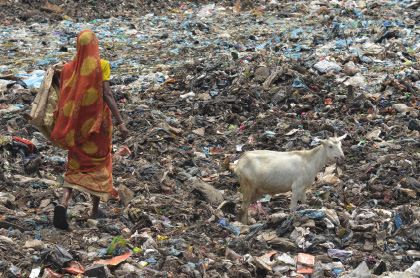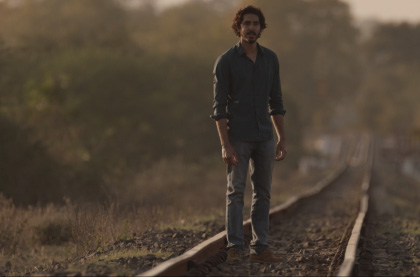
A mother struggles to support her children
Left by her husband, Kamla Munshi worked daily on construction sites to support her four children. In the state of Madhya Pradesh, where she lived, a female unskilled laborer typically earns about 90 rupees per day, that’s roughly $1.34. To help their family, her sons Saroo, five, and his older brother Guddu worked odd jobs and scrounged whatever food they could find.

More than a third of the population in Madhya Pradesh, his home state, live below the poverty line
CNN ARCHIVE CONTENT PRESENTED BY THE WEINSTEIN COMPANY
Saroo ventures out — and gets lost
One day Guddu asked Saroo to jump a train from Khandwa to the neighboring city of Burhanpur, 40 miles to the south, to look for loose change on the train. At the Burhanpur train station, Guddu told Saroo he would be right back, and Saroo took a nap. When Saroo woke up, Guddu hadn’t returned. Eventually, assuming his brother had boarded a train that would take them home, Saroo jumped on a train—one of the 12,000 that Indian Railways operates each day.

Lost in Kolkata
Saroo woke up the next day without any sense of where he was. Eventually, the train pulled up at Howrah Junction, the oldest station in Kolkata. He boarded countless trains trying to return home, but each one brought him back to the station, and he had to begin again. At Howrah Junction, more than 280 trains pass through daily, making it an overwhelming place for a five-year-old boy who did not know how to read or speak the local language.
23 million passengers

Each day, India's trains carry 23 million passengers. India's railway network is the fourth largest in the world, transporting over 8 billion passengers and 106 million tons of freight annually.

CNN ARCHIVE CONTENT PRESENTED BY THE WEINSTEIN COMPANY
With more than 7,000 stations and nearly 140,000 railway bridges, the system's scale is enormous. Indian Railways owns 4,823 locomotives and 5,633 diesel engines. In addition, the company still operates 43 steam locomotives. The engines are needed to pull a combined 50,000 passenger carriages.

The Search for Saroo
Saroo's mother Kamla began searching for Saroo and his brother Guddu. After a few weeks, a police officer informed her that Guddu had been found dead near the Burhanpur station; he had been struck by a train. She confined her search to Saroo, looking for him for years. Unfortunately, her plight was not uncommon. An average of 60,000 children go missing every year across India, approximately one every eight minutes. Many of them are never found.





Statistics show that some 60,000 children go missing every year from across the populous nation.

Street Child in Kolkata
Kolkata, despite being home to Saint Mother Teresa, was hardly a haven for the five-year-old Saroo, who had to beg and live on the streets to survive. A man took Saroo in for three days, but when he introduced Saroo to his friend, Saroo suspected something was wrong and made a run for it. He likely avoided a terrible but common fate: Poor children are incredibly vulnerable to being caught by human traffickers in India, which has the largest slave population in the world, at 18 million. Children can be forced into sex work or to beg for a don. Saroo, luckily, escaped and eventually found his way into an orphanage.

There are over 21,000 street children in Kolkata and its twin city of Howrah. The leading occupation for street children in India is sorting through garbage.
A new home in Tasmania
John and Sue Brierley, residents of Hobart, Tasmania, adopted Saroo, who was sent away to a new life and a new home filled with comforts that he would not have dreamed of before. On his wall, Sue posted a map of India, which Saroo would stare at every day.

International adoptions are rare in India, with only 666 adoptions coming from foreign parents in 2015, according to government statistics. This is only a small glimpse of the picture, as officials say an illegal adoption market also exists. India's government recently overhauled its adoption system to streamline the process and make more adoptions happen, but the changes are slow to manifest.
CNN ARCHIVE CONTENT PRESENTED BY THE WEINSTEIN COMPANY
Finding a needle in a haystack
As an adult, Saroo began to think something was missing. He wanted to find his birth family. Then he discovered Google Earth. Saroo would stay up until 3 a.m. most nights, meticulously combing through Google Earth to find his hometown. It took years, but his patience was rewarded when he came across the town of Khandwa, where he recognized the waterfall where he used to bathe.
Reunited with his mother
In February 2012, after twenty-four years, Saroo was reunited with his mother.
